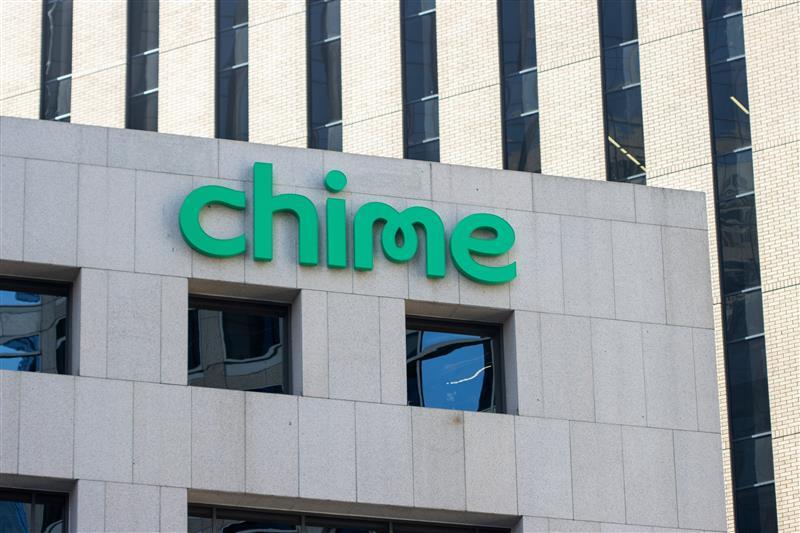You Don’t Need a Chime Marketing Budget to Make Smart Marketing Investments

With the recent S-1 filing of Chime to go public (which was made official this week, trading under the ticker CHYM), the industry was finally able to get a glimpse behind the curtain of one of the most successful fintech companies in the U.S.
Also see Tony DeSanctis’ Chime IPO Hot Take: Hot Takes | Cornerstone Advisors
Some interesting stats included:
- 8.6M active customers as of March 2025 (a 23% YoY Increase)
- $1.67 billion in revenue in 2024
- $251 in average revenue per active customer
But one number really grabbed my attention: Chime spent $519M on sales and marketing in 2024.
This led me to the question: Do banks and credit unions with stronger growth rates spend more on sales and marketing than others?
The answer appears to be yes.
Using regulatory data for banks and credit unions between $1 billion and $10 billion in assets over the past three years, I compared deposit growth rates to marketing spend (read: marketing, advertising, and promotional expense) as a percentage of both operating revenue and as a percentage of noninterest expense.

In each instance, institutions with top-quartile deposit growth consistently had a higher relative marketing spend than the industry median (and those with bottom-quartile deposit growth) over the past three years.
So, what does this mean?
If you’re the head of marketing at a bank or credit union, you now have some ammo to take to your next budget meeting.
But is simply spending more on billboards the silver bullet for growth? If you are one of those stingy banks that don’t shell out a dime for marketing, it might help some.
The objection is coming through loud and clear: “Tristan, Chime is a technology company, not a bank. We can’t spend like them!”
True, but SoFi IS a bank, and look at its stats:

Should a bank spend 30% of its operating revenue on marketing to drive growth? Of course not, it would be out of business in a year. But what this does show is that success in today’s banking landscape may require banking leaders to rethink the role of marketing and how it will have to shift to meet the new realities.
It’s no secret that the industry has been going through “digital transformation” for the past few years. And while a ton of investments have been made in “digital,” the “transformation” part is still lacking at most institutions.
What needs to transform is the way banks operate and do business, and that includes their marketing capabilities. Companies like Sofi and Chime have paved a compelling path for growth and shown that the high-performing bank of the future may need to begin operating (and spending, to a degree) more like a tech company that offers banking services than the legacy model of yore.
Of course, the path is not traversed overnight but follows a continuum: from the bank whose marketing plan includes turning on the “Open” sign to that of SoFi, Chime, et al.

To compete with these tech-driven leaders, banks and credit unions will need to begin building capabilities to move up the continuum. Here are three things they can do to prepare for Future Ready Marketing:
1. Get Your Data in OrderMost banks and credit unions are sitting on gold mines of data (account behavior, transaction history, channel usage), but it’s fragmented, stale, or inaccessible. This hampers everything from campaign targeting to measuring your return on investment (ROI).
Data is the foundation of effective digital marketing. Without clean, connected, and real-time data, even the best campaigns fall flat. Tech-native companies like Chime and SoFi don’t just guess; they personalize every touchpoint based on rich behavioral and contextual insights.
Institutions that get their data houses in order shift from “spray-and-pray” to precision marketing that speaks to the right customer, at the right time, in the right channel.
2. Invest in Marketing AutomationMarketing teams are often small, overburdened, and manually managing too many disconnected tools and campaigns. This leads to inefficiency, inconsistency, and missed opportunities.
Tech companies don’t send one-off emails and hope for the best. They build scalable journeys that are automated with always-on campaigns that nurture leads and drive conversions without constant human intervention.
Marketing automation tools empower an institution to amplify its marketing impact with the same or fewer resources, turning the marketing team into a force multiplier.
3. Deliver a Rock-Solid Origination ExperienceBanks and credit unions spend a lot of money to attract potential customers. Unfortunately, too often, prospective customers looking to open an account or apply for a loan are lost to a clunky, multi-step, paper-heavy onboarding process.
Marketing doesn’t end when someone expresses interest. Tech companies obsess over onboarding UX because they know every second of friction costs conversions. A seamless digital origination experience is the difference between turning interest into revenue and a wasted budget.
With a rock-solid origination experience, bank leaders can protect their marketing investments and ensure that interest turns into funded accounts, approved loans, and loyal relationships.
Community banks and credit unions don’t need Super Bowl budgets to market like Chime or SoFi. But they do need to start thinking and acting more like tech companies. This means harnessing data, automating where possible, and delivering frictionless digital experiences. Leaders who execute on this strategy will compete and grow. The ones that don’t? They’ll keep buying billboards and wondering why growth is so hard.
Tristan Green is a director at Cornerstone Advisors. Follow him on LinkedIn.
